Management Accounting Report: Capital Bedrooms and Kitchen, Unit 5
VerifiedAdded on 2023/01/13
|13
|984
|26
Report
AI Summary
This report provides a comprehensive overview of management accounting principles, focusing on the financial analysis of Capital Bedrooms and Kitchen. It begins with an introduction to management accounting, its purpose, and its application within an organization. The report then delves into detaile...
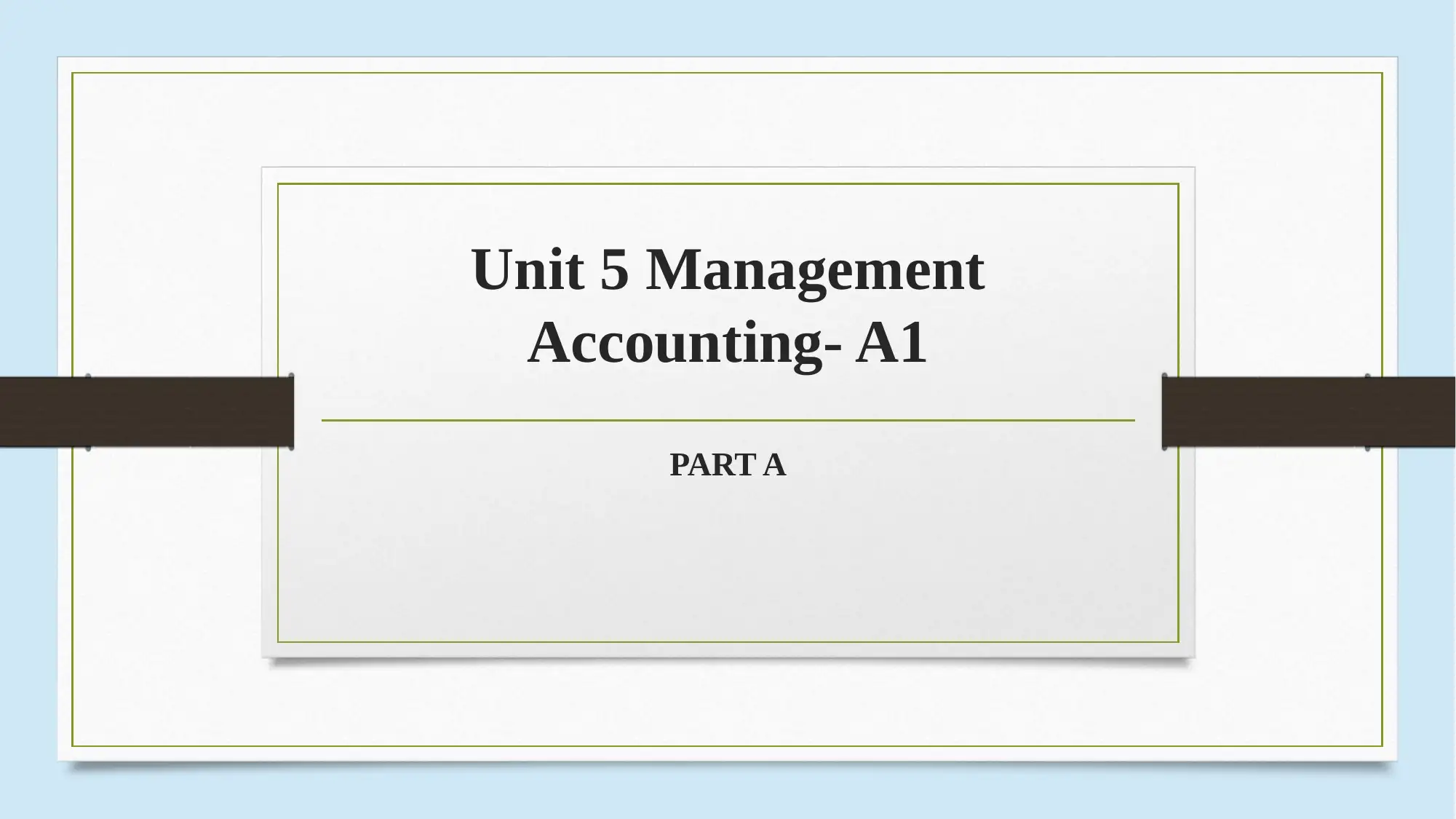
Unit 5 Management
Accounting- A1
PART A
Accounting- A1
PART A
Paraphrase This Document
Need a fresh take? Get an instant paraphrase of this document with our AI Paraphraser
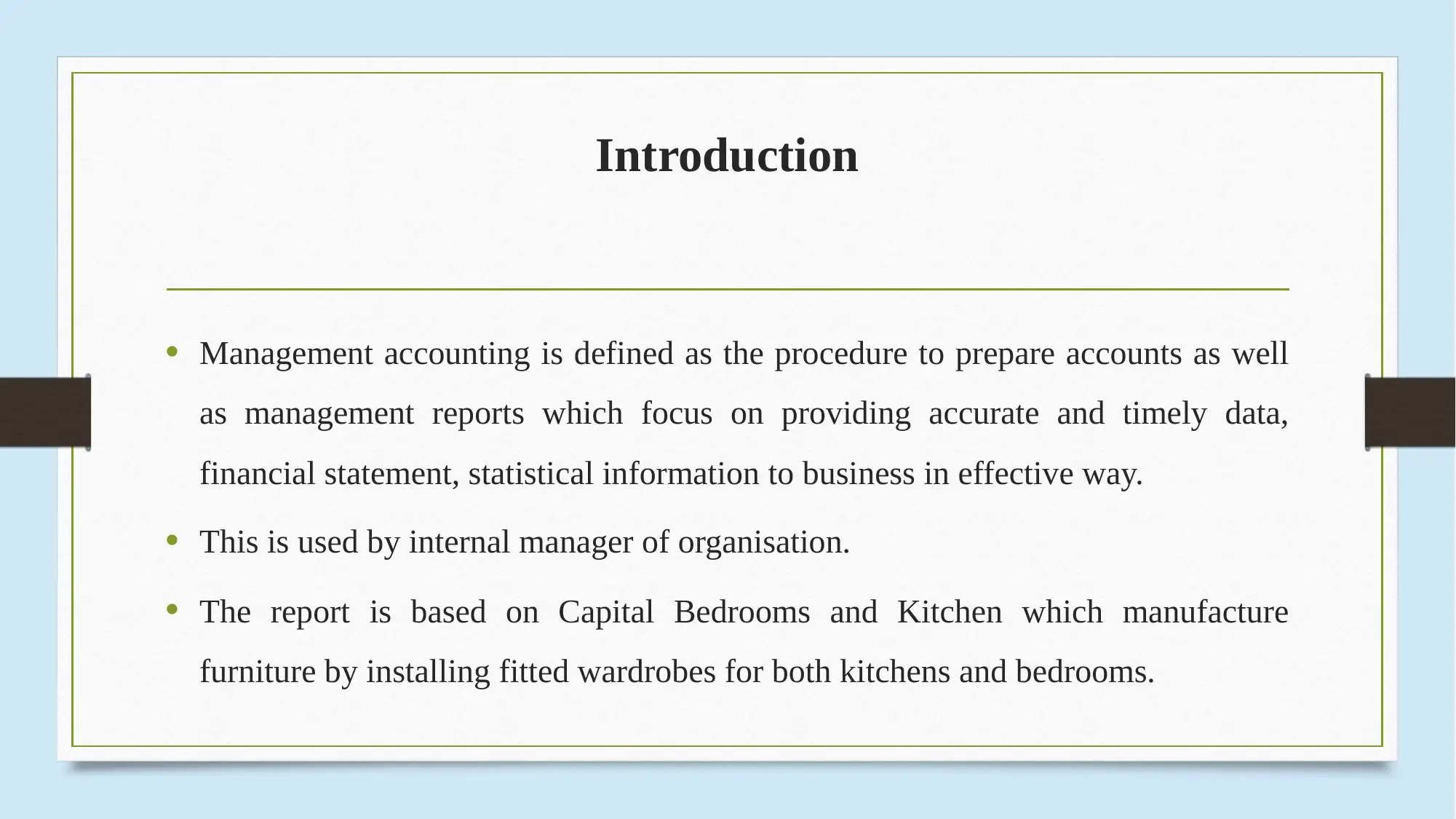
Introduction
• Management accounting is defined as the procedure to prepare accounts as well
as management reports which focus on providing accurate and timely data,
financial statement, statistical information to business in effective way.
• This is used by internal manager of organisation.
• The report is based on Capital Bedrooms and Kitchen which manufacture
furniture by installing fitted wardrobes for both kitchens and bedrooms.
• Management accounting is defined as the procedure to prepare accounts as well
as management reports which focus on providing accurate and timely data,
financial statement, statistical information to business in effective way.
• This is used by internal manager of organisation.
• The report is based on Capital Bedrooms and Kitchen which manufacture
furniture by installing fitted wardrobes for both kitchens and bedrooms.
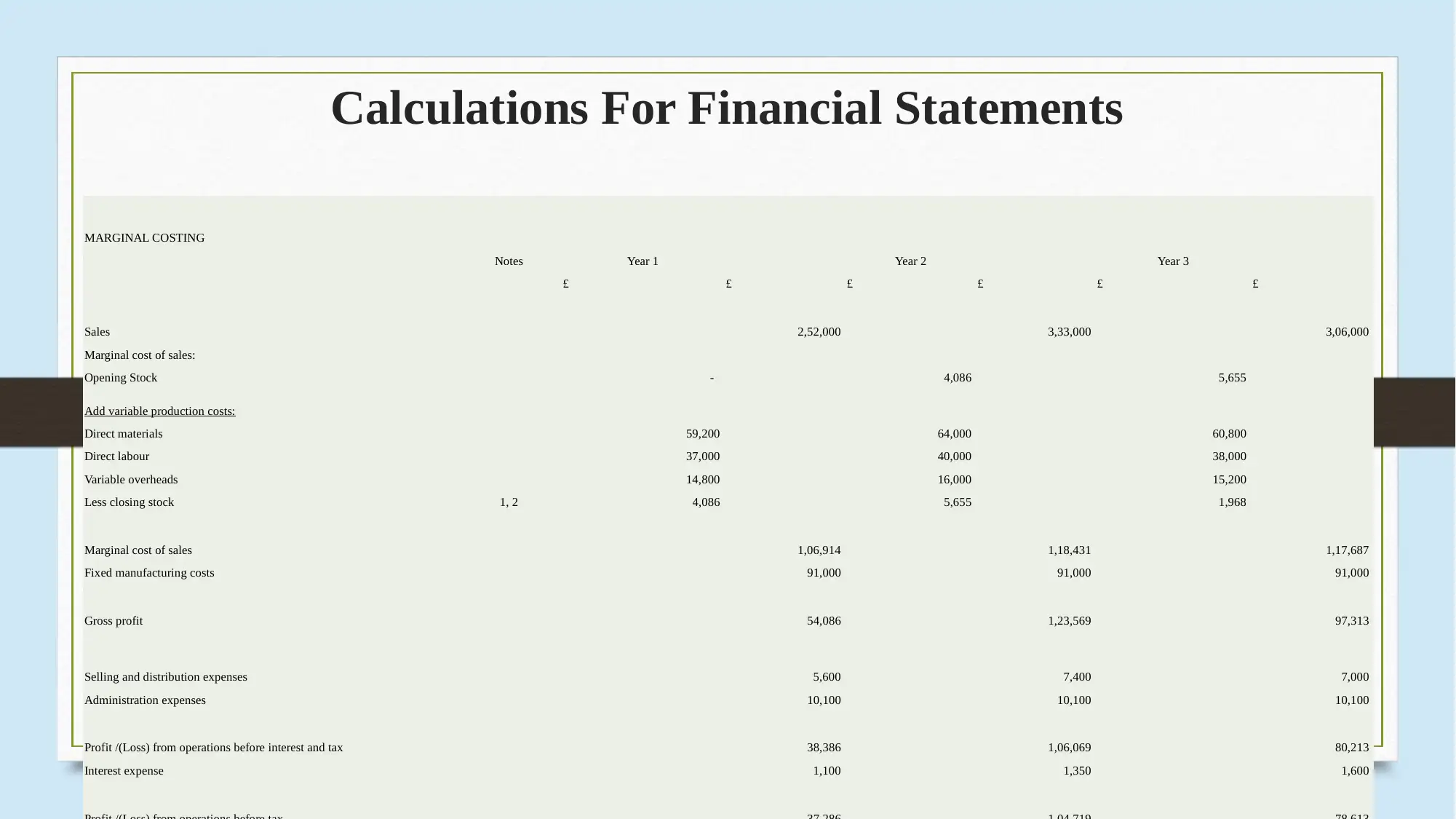
Calculations For Financial Statements
MARGINAL COSTING
Notes Year 1 Year 2 Year 3
£ £ £ £ £ £
Sales 2,52,000 3,33,000 3,06,000
Marginal cost of sales:
Opening Stock - 4,086 5,655
Add variable production costs:
Direct materials 59,200 64,000 60,800
Direct labour 37,000 40,000 38,000
Variable overheads 14,800 16,000 15,200
Less closing stock 1, 2 4,086 5,655 1,968
Marginal cost of sales 1,06,914 1,18,431 1,17,687
Fixed manufacturing costs 91,000 91,000 91,000
Gross profit 54,086 1,23,569 97,313
Selling and distribution expenses 5,600 7,400 7,000
Administration expenses 10,100 10,100 10,100
Profit /(Loss) from operations before interest and tax 38,386 1,06,069 80,213
Interest expense 1,100 1,350 1,600
MARGINAL COSTING
Notes Year 1 Year 2 Year 3
£ £ £ £ £ £
Sales 2,52,000 3,33,000 3,06,000
Marginal cost of sales:
Opening Stock - 4,086 5,655
Add variable production costs:
Direct materials 59,200 64,000 60,800
Direct labour 37,000 40,000 38,000
Variable overheads 14,800 16,000 15,200
Less closing stock 1, 2 4,086 5,655 1,968
Marginal cost of sales 1,06,914 1,18,431 1,17,687
Fixed manufacturing costs 91,000 91,000 91,000
Gross profit 54,086 1,23,569 97,313
Selling and distribution expenses 5,600 7,400 7,000
Administration expenses 10,100 10,100 10,100
Profit /(Loss) from operations before interest and tax 38,386 1,06,069 80,213
Interest expense 1,100 1,350 1,600
⊘ This is a preview!⊘
Do you want full access?
Subscribe today to unlock all pages.

Trusted by 1+ million students worldwide
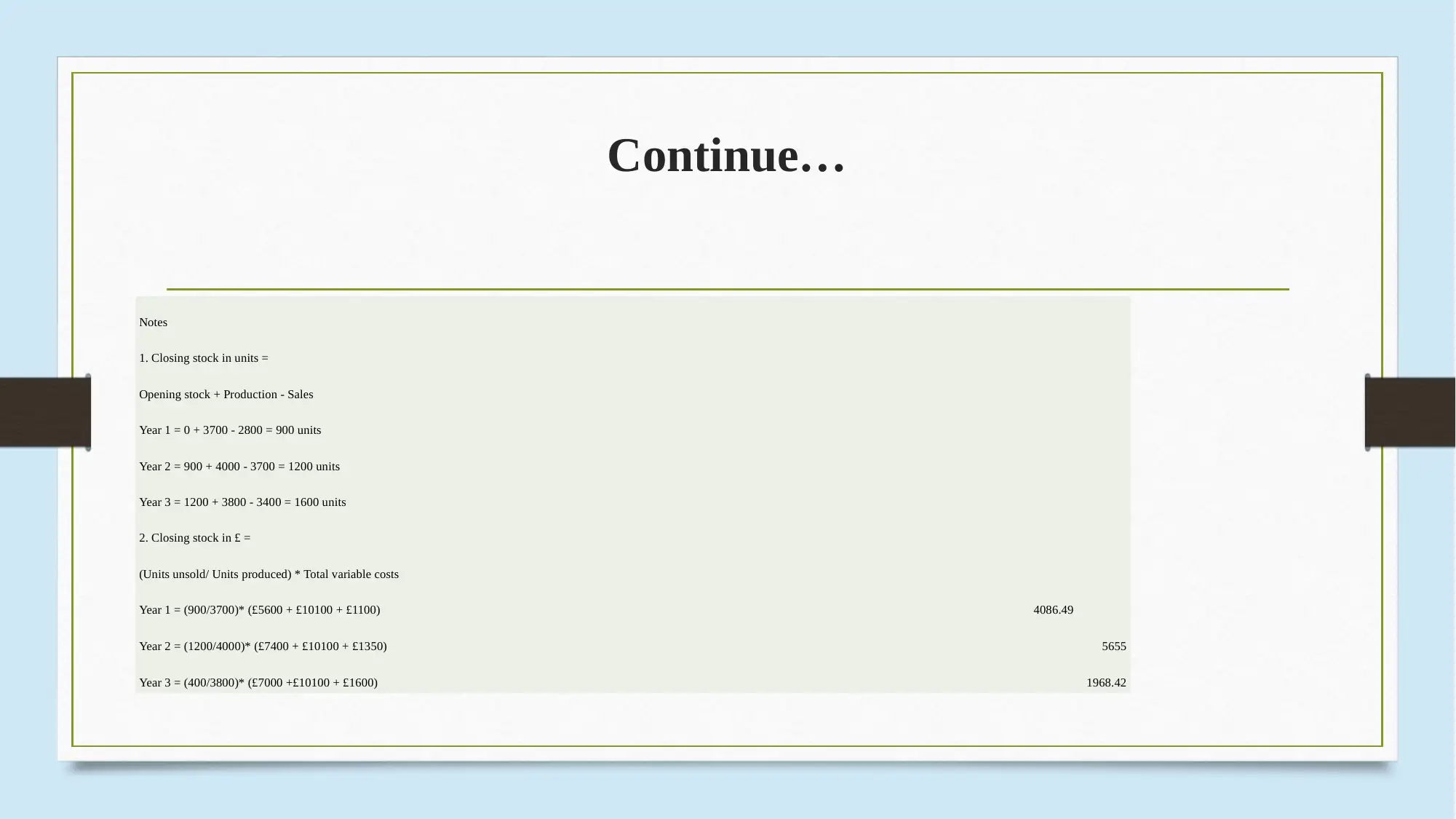
Continue…
Notes
1. Closing stock in units =
Opening stock + Production - Sales
Year 1 = 0 + 3700 - 2800 = 900 units
Year 2 = 900 + 4000 - 3700 = 1200 units
Year 3 = 1200 + 3800 - 3400 = 1600 units
2. Closing stock in £ =
(Units unsold/ Units produced) * Total variable costs
Year 1 = (900/3700)* (£5600 + £10100 + £1100) 4086.49
Year 2 = (1200/4000)* (£7400 + £10100 + £1350) 5655
Year 3 = (400/3800)* (£7000 +£10100 + £1600) 1968.42
Notes
1. Closing stock in units =
Opening stock + Production - Sales
Year 1 = 0 + 3700 - 2800 = 900 units
Year 2 = 900 + 4000 - 3700 = 1200 units
Year 3 = 1200 + 3800 - 3400 = 1600 units
2. Closing stock in £ =
(Units unsold/ Units produced) * Total variable costs
Year 1 = (900/3700)* (£5600 + £10100 + £1100) 4086.49
Year 2 = (1200/4000)* (£7400 + £10100 + £1350) 5655
Year 3 = (400/3800)* (£7000 +£10100 + £1600) 1968.42
Paraphrase This Document
Need a fresh take? Get an instant paraphrase of this document with our AI Paraphraser
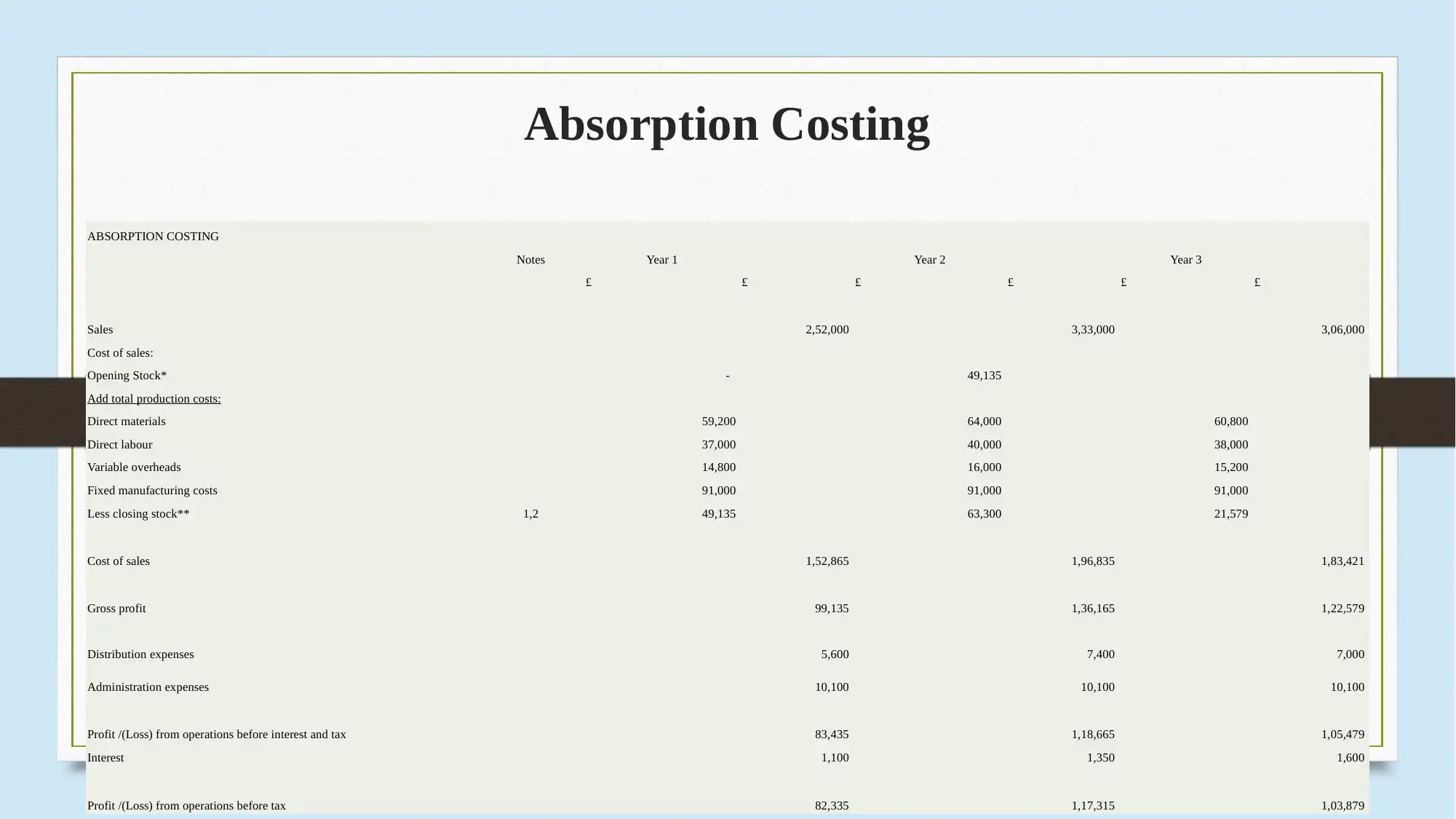
Absorption Costing
ABSORPTION COSTING
Notes Year 1 Year 2 Year 3
£ £ £ £ £ £
Sales 2,52,000 3,33,000 3,06,000
Cost of sales:
Opening Stock* - 49,135
Add total production costs:
Direct materials 59,200 64,000 60,800
Direct labour 37,000 40,000 38,000
Variable overheads 14,800 16,000 15,200
Fixed manufacturing costs 91,000 91,000 91,000
Less closing stock** 1,2 49,135 63,300 21,579
Cost of sales 1,52,865 1,96,835 1,83,421
Gross profit 99,135 1,36,165 1,22,579
Distribution expenses 5,600 7,400 7,000
Administration expenses 10,100 10,100 10,100
Profit /(Loss) from operations before interest and tax 83,435 1,18,665 1,05,479
Interest 1,100 1,350 1,600
Profit /(Loss) from operations before tax 82,335 1,17,315 1,03,879
ABSORPTION COSTING
Notes Year 1 Year 2 Year 3
£ £ £ £ £ £
Sales 2,52,000 3,33,000 3,06,000
Cost of sales:
Opening Stock* - 49,135
Add total production costs:
Direct materials 59,200 64,000 60,800
Direct labour 37,000 40,000 38,000
Variable overheads 14,800 16,000 15,200
Fixed manufacturing costs 91,000 91,000 91,000
Less closing stock** 1,2 49,135 63,300 21,579
Cost of sales 1,52,865 1,96,835 1,83,421
Gross profit 99,135 1,36,165 1,22,579
Distribution expenses 5,600 7,400 7,000
Administration expenses 10,100 10,100 10,100
Profit /(Loss) from operations before interest and tax 83,435 1,18,665 1,05,479
Interest 1,100 1,350 1,600
Profit /(Loss) from operations before tax 82,335 1,17,315 1,03,879
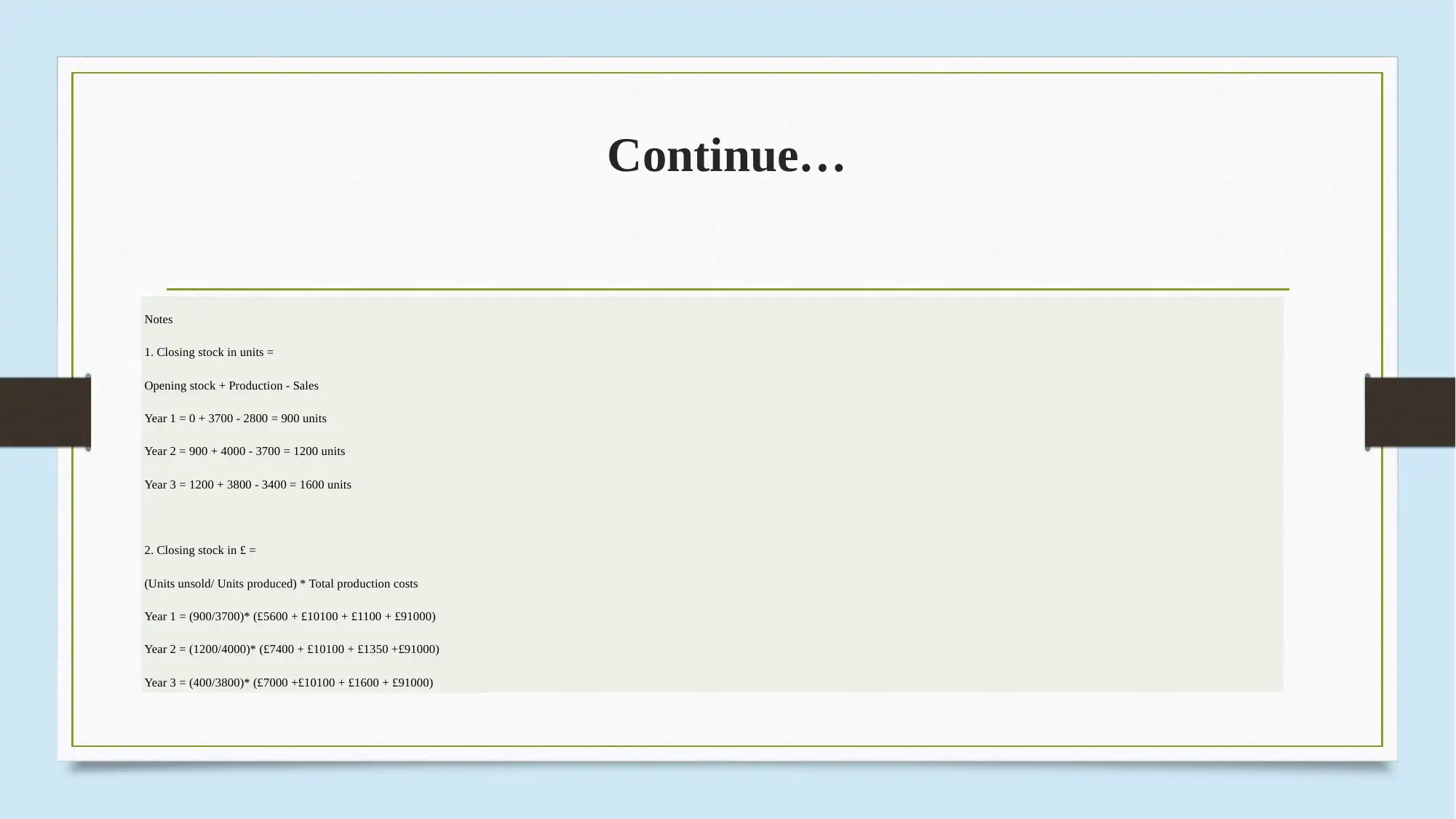
Continue…
Notes
1. Closing stock in units =
Opening stock + Production - Sales
Year 1 = 0 + 3700 - 2800 = 900 units
Year 2 = 900 + 4000 - 3700 = 1200 units
Year 3 = 1200 + 3800 - 3400 = 1600 units
2. Closing stock in £ =
(Units unsold/ Units produced) * Total production costs
Year 1 = (900/3700)* (£5600 + £10100 + £1100 + £91000)
Year 2 = (1200/4000)* (£7400 + £10100 + £1350 +£91000)
Year 3 = (400/3800)* (£7000 +£10100 + £1600 + £91000)
Notes
1. Closing stock in units =
Opening stock + Production - Sales
Year 1 = 0 + 3700 - 2800 = 900 units
Year 2 = 900 + 4000 - 3700 = 1200 units
Year 3 = 1200 + 3800 - 3400 = 1600 units
2. Closing stock in £ =
(Units unsold/ Units produced) * Total production costs
Year 1 = (900/3700)* (£5600 + £10100 + £1100 + £91000)
Year 2 = (1200/4000)* (£7400 + £10100 + £1350 +£91000)
Year 3 = (400/3800)* (£7000 +£10100 + £1600 + £91000)
⊘ This is a preview!⊘
Do you want full access?
Subscribe today to unlock all pages.

Trusted by 1+ million students worldwide
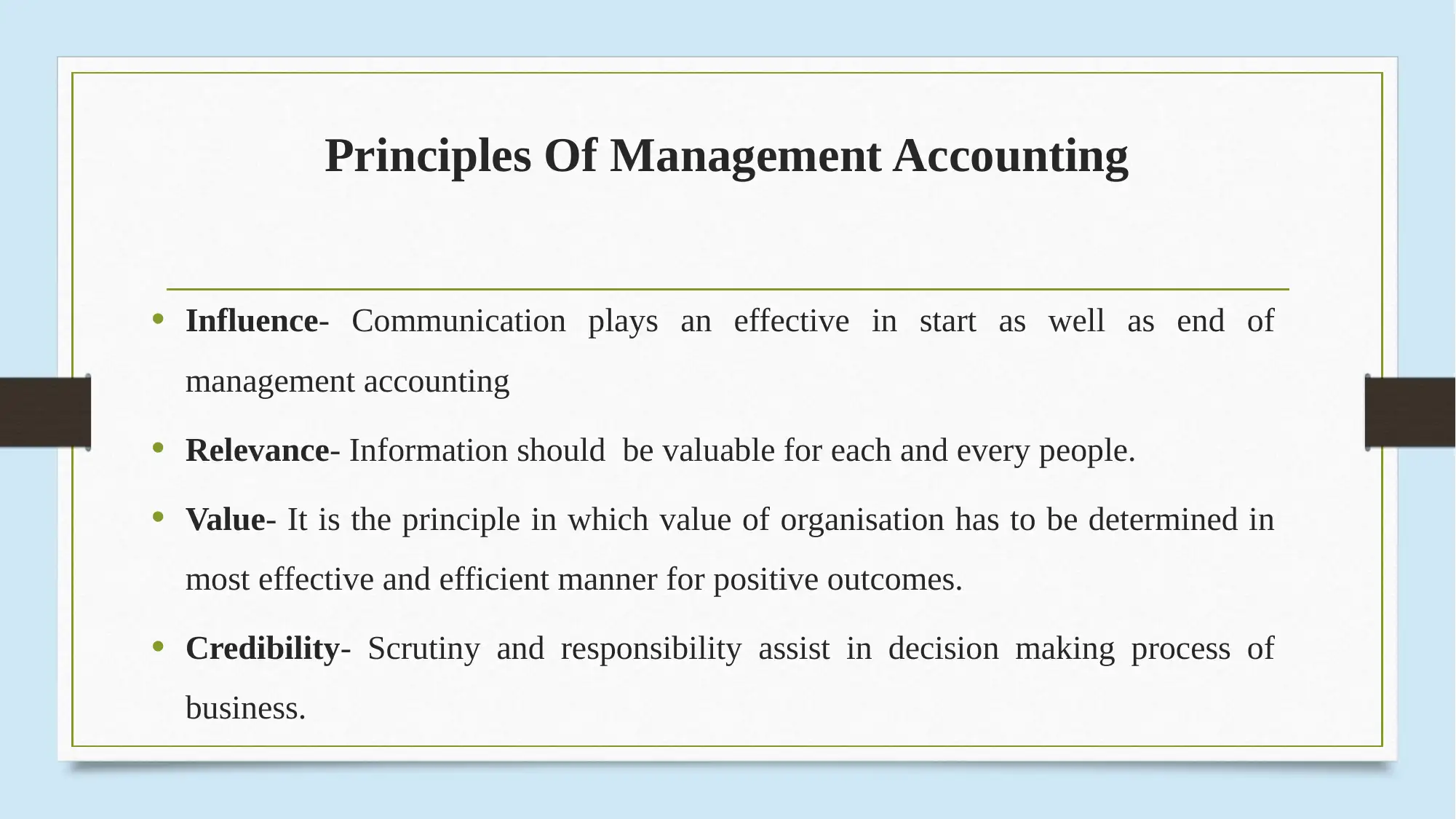
Principles Of Management Accounting
• Influence- Communication plays an effective in start as well as end of
management accounting
• Relevance- Information should be valuable for each and every people.
• Value- It is the principle in which value of organisation has to be determined in
most effective and efficient manner for positive outcomes.
• Credibility- Scrutiny and responsibility assist in decision making process of
business.
• Influence- Communication plays an effective in start as well as end of
management accounting
• Relevance- Information should be valuable for each and every people.
• Value- It is the principle in which value of organisation has to be determined in
most effective and efficient manner for positive outcomes.
• Credibility- Scrutiny and responsibility assist in decision making process of
business.
Paraphrase This Document
Need a fresh take? Get an instant paraphrase of this document with our AI Paraphraser
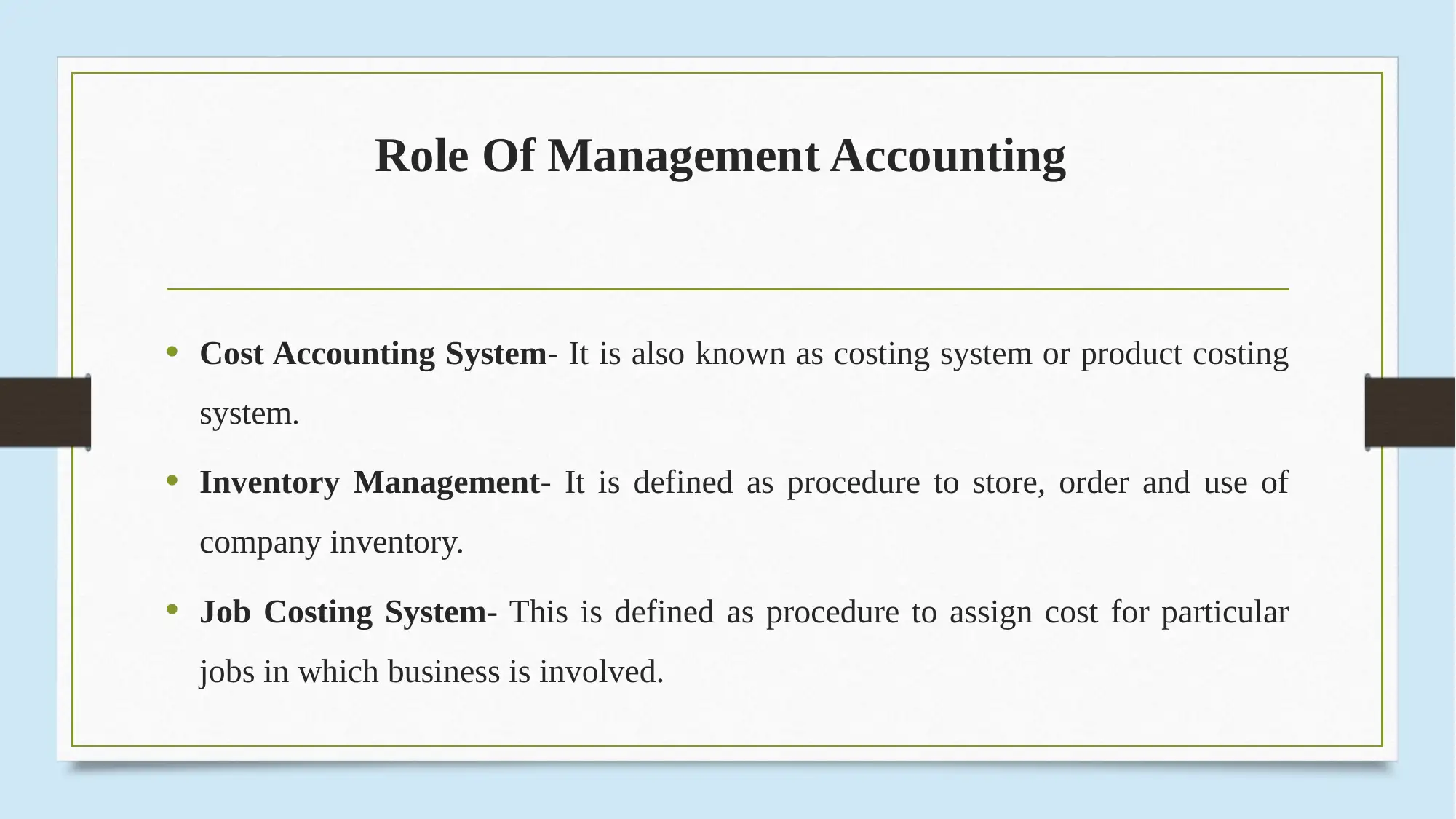
Role Of Management Accounting
• Cost Accounting System- It is also known as costing system or product costing
system.
• Inventory Management- It is defined as procedure to store, order and use of
company inventory.
• Job Costing System- This is defined as procedure to assign cost for particular
jobs in which business is involved.
• Cost Accounting System- It is also known as costing system or product costing
system.
• Inventory Management- It is defined as procedure to store, order and use of
company inventory.
• Job Costing System- This is defined as procedure to assign cost for particular
jobs in which business is involved.
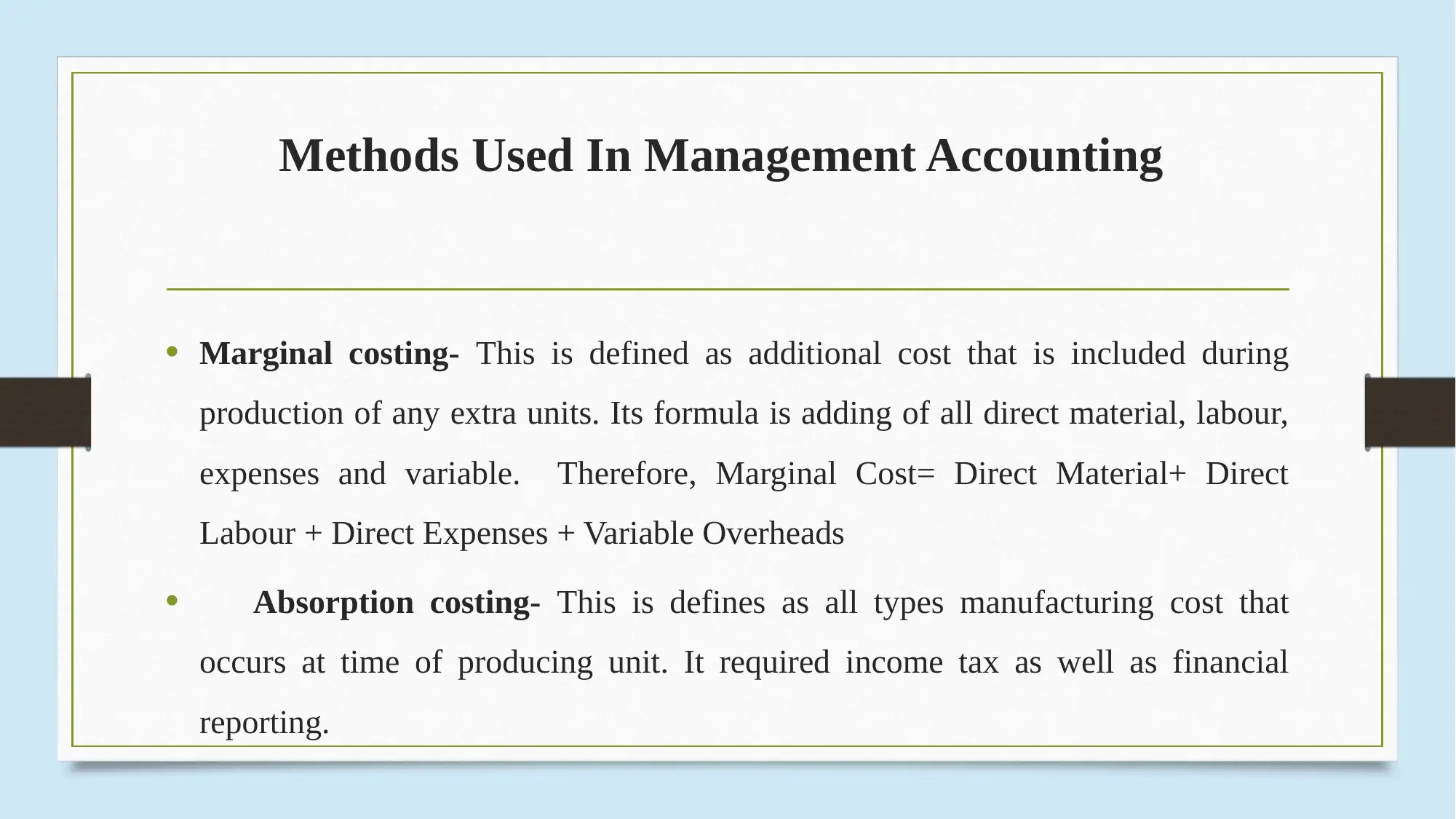
Methods Used In Management Accounting
• Marginal costing- This is defined as additional cost that is included during
production of any extra units. Its formula is adding of all direct material, labour,
expenses and variable. Therefore, Marginal Cost= Direct Material+ Direct
Labour + Direct Expenses + Variable Overheads
• Absorption costing- This is defines as all types manufacturing cost that
occurs at time of producing unit. It required income tax as well as financial
reporting.
• Marginal costing- This is defined as additional cost that is included during
production of any extra units. Its formula is adding of all direct material, labour,
expenses and variable. Therefore, Marginal Cost= Direct Material+ Direct
Labour + Direct Expenses + Variable Overheads
• Absorption costing- This is defines as all types manufacturing cost that
occurs at time of producing unit. It required income tax as well as financial
reporting.
⊘ This is a preview!⊘
Do you want full access?
Subscribe today to unlock all pages.

Trusted by 1+ million students worldwide
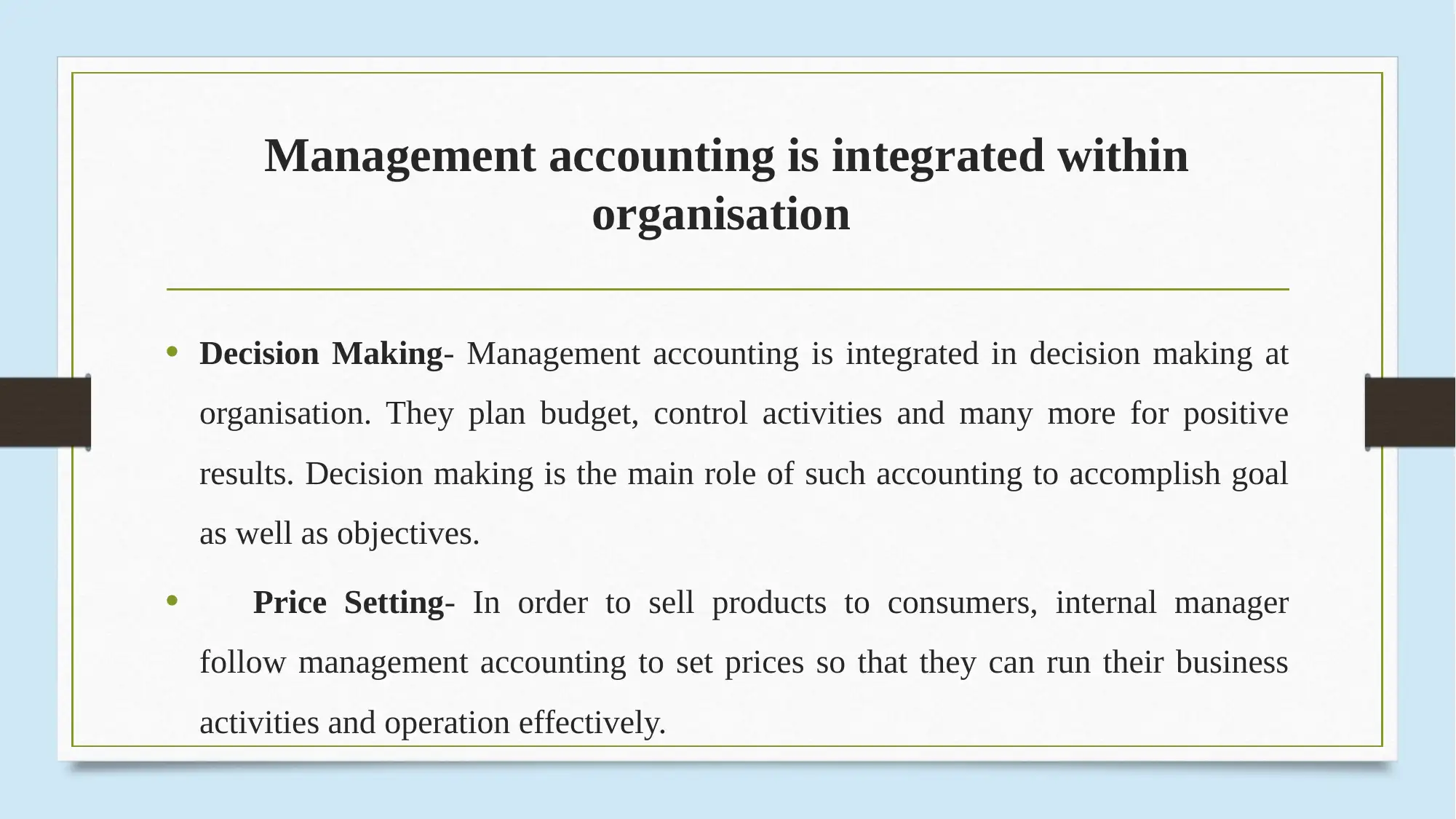
Management accounting is integrated within
organisation
• Decision Making- Management accounting is integrated in decision making at
organisation. They plan budget, control activities and many more for positive
results. Decision making is the main role of such accounting to accomplish goal
as well as objectives.
• Price Setting- In order to sell products to consumers, internal manager
follow management accounting to set prices so that they can run their business
activities and operation effectively.
organisation
• Decision Making- Management accounting is integrated in decision making at
organisation. They plan budget, control activities and many more for positive
results. Decision making is the main role of such accounting to accomplish goal
as well as objectives.
• Price Setting- In order to sell products to consumers, internal manager
follow management accounting to set prices so that they can run their business
activities and operation effectively.
Paraphrase This Document
Need a fresh take? Get an instant paraphrase of this document with our AI Paraphraser
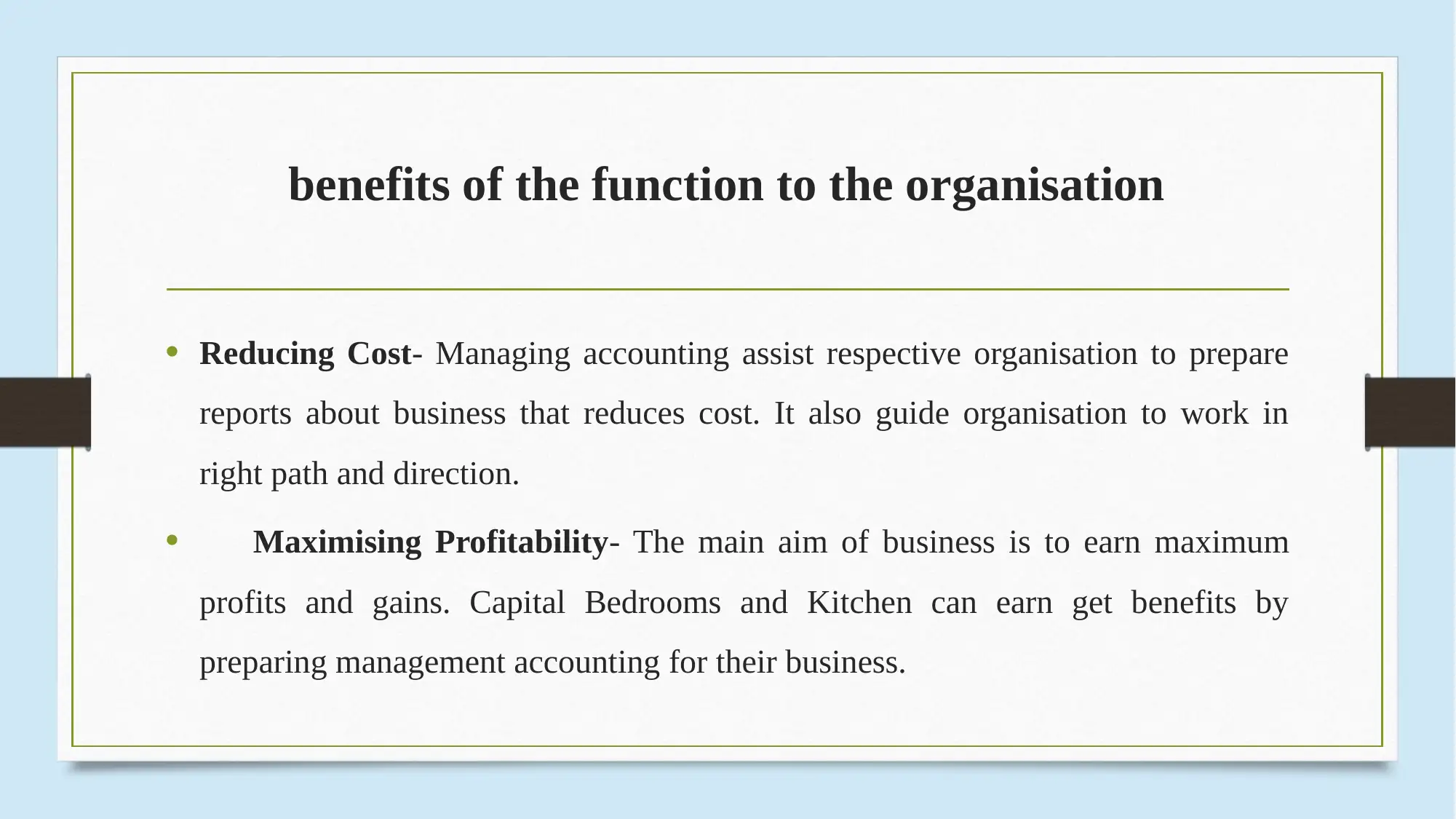
benefits of the function to the organisation
• Reducing Cost- Managing accounting assist respective organisation to prepare
reports about business that reduces cost. It also guide organisation to work in
right path and direction.
• Maximising Profitability- The main aim of business is to earn maximum
profits and gains. Capital Bedrooms and Kitchen can earn get benefits by
preparing management accounting for their business.
• Reducing Cost- Managing accounting assist respective organisation to prepare
reports about business that reduces cost. It also guide organisation to work in
right path and direction.
• Maximising Profitability- The main aim of business is to earn maximum
profits and gains. Capital Bedrooms and Kitchen can earn get benefits by
preparing management accounting for their business.
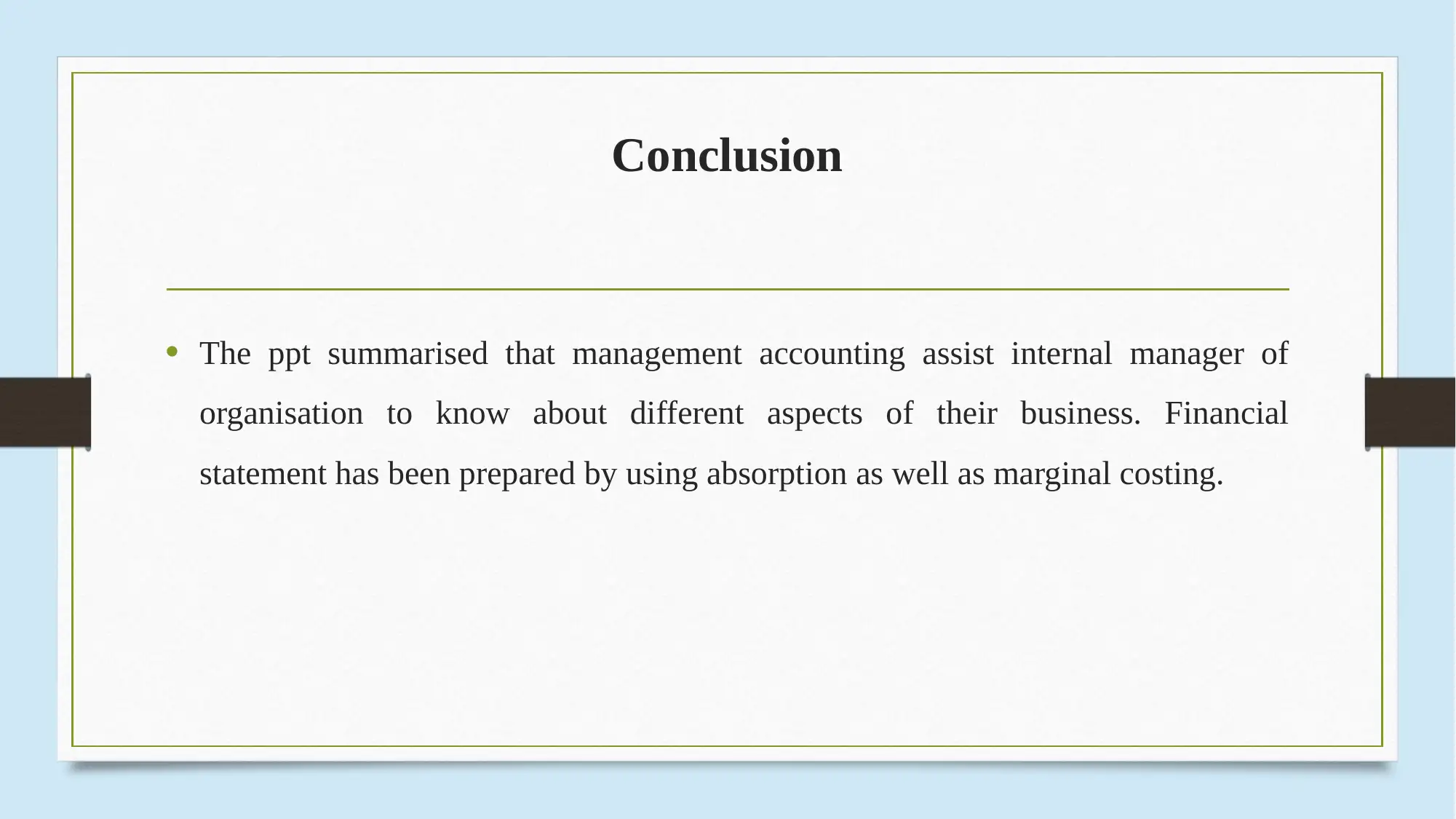
Conclusion
• The ppt summarised that management accounting assist internal manager of
organisation to know about different aspects of their business. Financial
statement has been prepared by using absorption as well as marginal costing.
• The ppt summarised that management accounting assist internal manager of
organisation to know about different aspects of their business. Financial
statement has been prepared by using absorption as well as marginal costing.
⊘ This is a preview!⊘
Do you want full access?
Subscribe today to unlock all pages.

Trusted by 1+ million students worldwide
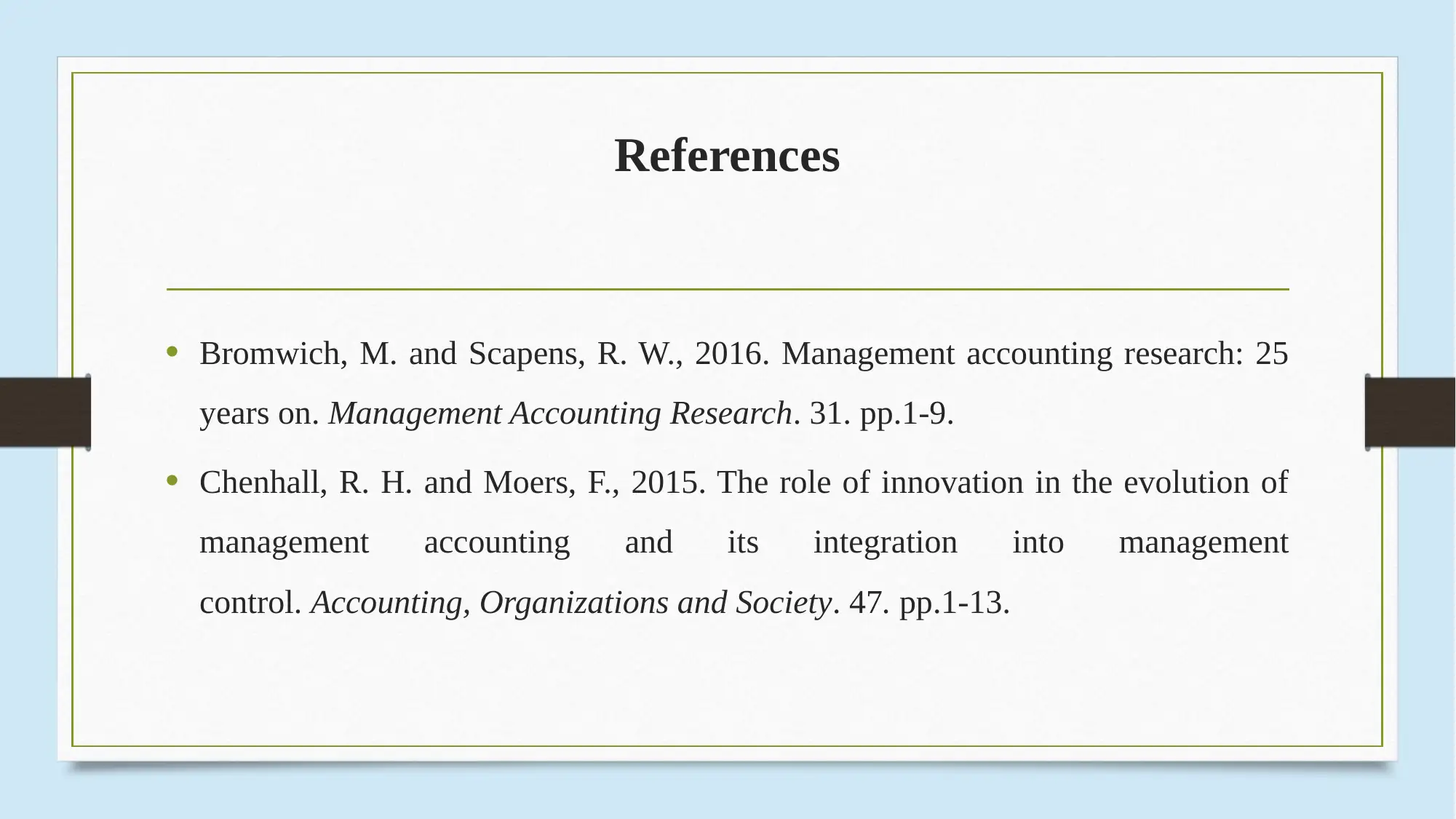
References
• Bromwich, M. and Scapens, R. W., 2016. Management accounting research: 25
years on. Management Accounting Research. 31. pp.1-9.
• Chenhall, R. H. and Moers, F., 2015. The role of innovation in the evolution of
management accounting and its integration into management
control. Accounting, Organizations and Society. 47. pp.1-13.
• Bromwich, M. and Scapens, R. W., 2016. Management accounting research: 25
years on. Management Accounting Research. 31. pp.1-9.
• Chenhall, R. H. and Moers, F., 2015. The role of innovation in the evolution of
management accounting and its integration into management
control. Accounting, Organizations and Society. 47. pp.1-13.
1 out of 13
Your All-in-One AI-Powered Toolkit for Academic Success.
+13062052269
info@desklib.com
Available 24*7 on WhatsApp / Email
![[object Object]](/_next/static/media/star-bottom.7253800d.svg)
Unlock your academic potential
© 2024 | Zucol Services PVT LTD | All rights reserved.